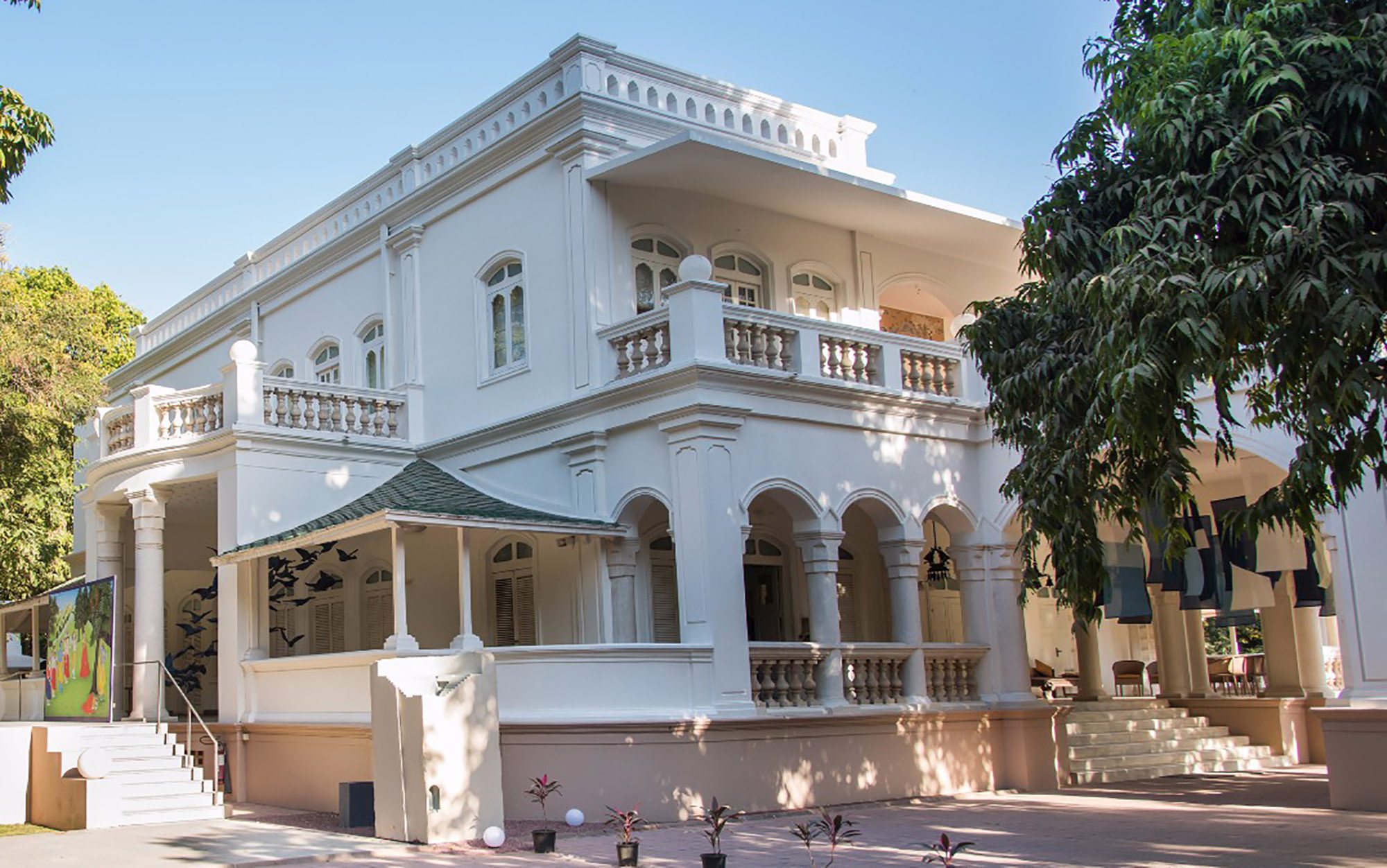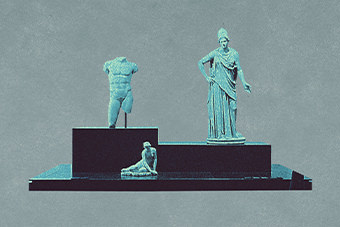A Padma Bhushan awardee in 1968, Kasturbhai Lalbhai was a well-known business tycoon and textile industrialist. He was also a friend of Sardar Vallabhbhai Patel, and was one of the most respected philanthropists and an extremely sought-after visionary head of the Jain community. A lover of arts and literature, his association with the Jain muni Punyavijayjee led to the restoration and study of ancient Jain manuscripts.
The Kasturbhai Lalbhai Museum campus in Ahmedabad, built on his ancestral property, comprises three buildings. The main building, a colonial style ancestral house, once popular as Lalbaug, was built in 1905 by Shri Lalbhai Dalpatbhai and continued to be in use as residence of his youngest son, Shri Kasturbhai, and family until 1997. Restored and renovated by architect Rahul Mehrotra and his team, it reopened as a museum in January 2017. It mainly houses the art collection of the renowned Tagore family of Bengal, a collection that was subsequently acquired by Shri Kasturbhai Lalbhai in the 1940s to help the Tagores out of their precarious financial condition. The paintings on display are from varied traditions and styles — Persian, Mughal, Deccan, Pahari and Rajasthani school, Tibetan thangkas, Company school portraits, modernist paintings from the Bengal school, and painted postcards from the pre-independent India. The museum also houses art in stone, metal, wood and Bidri that go back a thousand years.
The other two buildings are the Claude Batley House, which originally served as the servant and kitchen quarters for the Kasturbhai’s huge joint family, and the Rahul Mehrotra gallery positioned on the right side of the main building, which was originally used as the tennis court by the family. Both these spaces house temporary exhibitions — retrospectives of artists and display of works by young artists. When not in use for temporary exhibitions, Sanjay Lalbhai (grandson of Kasturbhai) and his wife Jayshree Lalbhai’s modern and contemporary art collections are displayed here. Besides, there is also an amphitheatre space on the left of the main building. The Jain temple, which was earlier part of this family estate, can now be approached through a separate gate.
Some of the artefacts housed at the museum include ‘The Ramayana’ painting by Nandalal Bose, made with wash and gouache on handmade paper depicting scenes from the great epic Ramayana; Rasamanjari paintings from the 18th century, painted by masters from Nurpur in the Punjab Hills illustrating the different moods and reactions of love of the Nayaka and the Nayika as composed by Bhanudatta in his Rasamanjari, a 15th century text of Indian aesthetics associated with the Reeti-kavyaa classical stream of Hindi poetry; Basholi painting of the Devi, composed during the 18th century, which shows Brahma, Vishnu and Mahesh (Shiva) worshipping the Devi (the Goddess) seated on a throne; and a unique group of painted postcards from 1913 to 1940 illustrating the development of the Bengal school of art and also the beautiful camaraderie shared between its teachers, students and associates. The museum in the past years has organised lecture series on contemporary art and mythological story-telling sessions for children and the owner Mrs Jasyhree Lalbhai would like the place to become Ahmedabad’s cultural centre.
More Information
Best time of the day to visit
10:00 AM
Museum administered by
Private Organization
Person in charge
Updated
Quick Facts
Address:
Near Shahibaug underbridge, next to Reliance Fresh, opposite Shanidev Temple, Shahibaug, Ahmedabad, Gujarat - 380004
Visiting Time:
Sunday: 10:00 am - 5:00 pm
Monday: 10:00 am - 5:00 pm
Tuesday: 10:00 am - 5:00 pm
Wednesday: Closed
Thursday: 10:00 am - 5:00 pm
Friday: 10:00 am - 5:00 pm
Saturday: 10:00 am - 5:00 pm
Visits need to be pre-booked, booking is available for four slots-10:00 am, 12 noon, 2.30pm and 4:00 pm
Email:
Entry Fees:
Entry is free.




